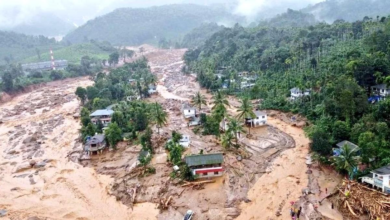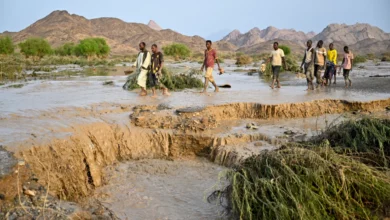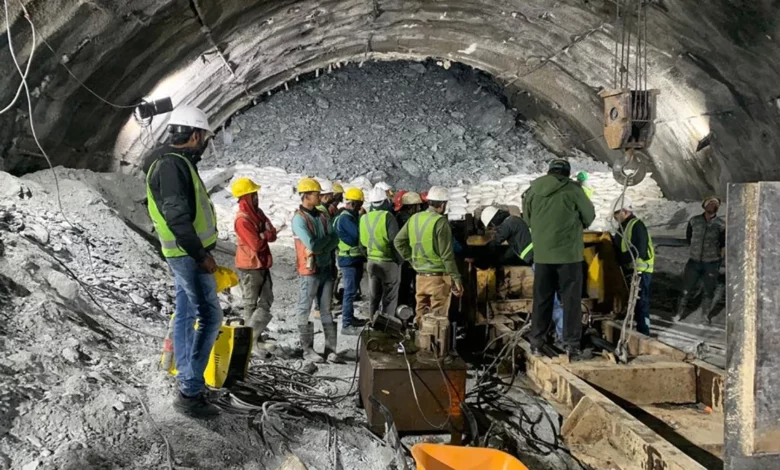
The weekslong effort to save 41 workers trapped in a collapsed Himalayan tunnel has entered a perilous new phase, with rescuers attempting to drill downward through unstable mountain terrain after a safer route faltered at the final stage.
The men have been trapped since November 12 when the part of tunnel they were helping to construct in India’s northern Uttarakhand state gave way, blocking their only exit with more than 60 meters (200 feet) of broken rock, concrete and twisted metal.
Engineers had previously attempted to excavate the debris in the exit shaft using heavy machinery, but were forced to abandon efforts late on Friday after the powerful US-made drill they were using broke down just meters from the trapped men.
The agonizing setback was the latest to befall the complex and challenging operation, that has twice seen officials suggest a rescue was imminent only for conditions to change and efforts halt.
Authorities are now attempting to dig through the remaining debris in the exit tunnel by hand, while simultaneously drilling down from a forested hill some 86 meters (282 feet) above the trapped men.
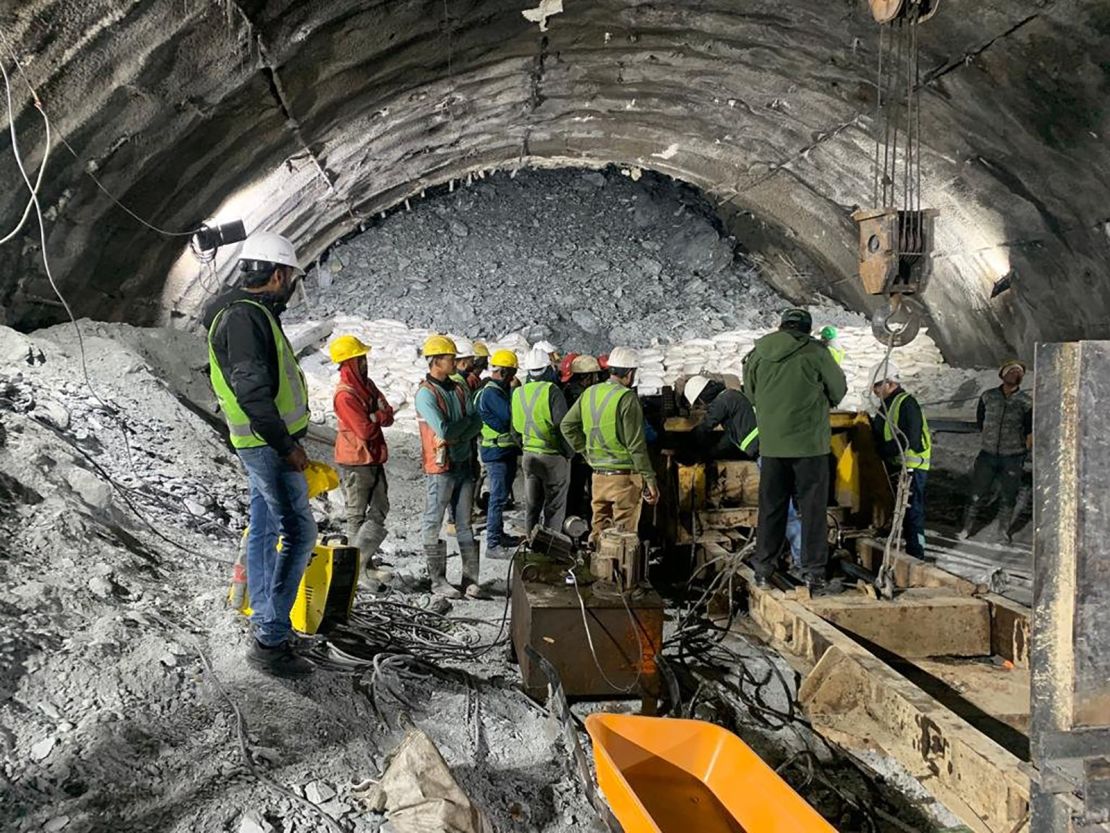
The vertical drilling had reached a depth of 35 meters (114 feet) by Monday, according to the secretary of India’s Ministry of Road Transport Highways, Mahmood Ahmed, who estimated work could be completed by Thursday.
But geologists have warned vertical drilling is fraught with risk and warned it could weaken the fragile mountain, causing more debris to fall into the already partially collapsed tunnel chamber.
“The rock types in the Himalayas are very weak,” Yaspal Sundriyal, a geology professor from the H.B. Garhwal University in Uttarakhand told CNN.
“The vertical drilling will disturb the rock formation and will cause vibrations to the mountain,” said Sundriyal, who is considered an expert in local rock formations.
“The rocks in the Himalayas should be treated very cautiously and with very strong support. I’m afraid drilling will disturb the soil of the rock above the tunnel.”
On site, authorities say both rescue options – the manual horizontal dig and the vertical drilling – are considered safe options, but are unable to tell which will deem most effective.
“Both vertical and horizontal drilling are safe,” said Harpal Singh, the former director of India’s Border Roads Organization that maintains the country’s road networks.
“However, it is difficult to say which one of the two methods would help us reach the trapped workers first,” he told reporters Monday.
Families face agonizing wait
The trapped men, all migrant workers from some of India’s poorest states, have been receiving food, water and oxygen through a 53-meter (173 foot) pipe that has been inserted through the debris and authorities say they remain in good health.
Doctors on site have kept in regular contact with the men inside, giving them tips on how to remain positive and calm.
But for most of the families of the trapped men, the wait has been an agonizing switch between hope and despair.
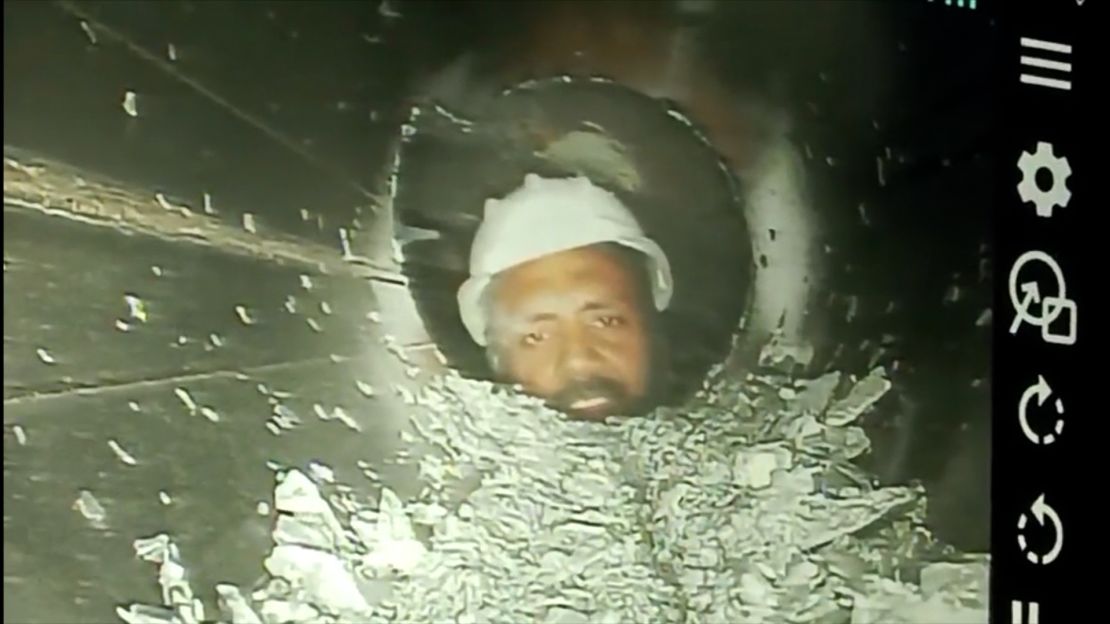
Mahi Shah, whose brother-in-law Sonu is trapped inside, said his family didn’t learn about the incident until his grandfather read about the collapse in the newspaper on November 14.
Shah immediately took a train from his home in India’s eastern Bihar state to be closer to Sonu, he said.
Like other relatives, Shah has gathered at the tunnel exit each day to pray beside a makeshift temple.
“The fear inside Sonu’s mind is growing bigger and bigger,” Shah said, adding that he has a seven-year-old daughter who keeps asking where her father is.
”We have not told her the truth yet. We hope we don’t need to… Everyone at home is petrified.”
Krishna Chauhan, whose 21-year-old nephew Manjeet is stuck inside, said the wait is a reminder of another heartbreaking incident their family had to endure nearly two years ago.
Manjeet’s older brother, also a construction worker, was killed after he suffered an electric shock while working in Mumbai. The family is still coping with that loss, Chauhan said, adding Manjeet is the one that holds them together.
They are holding onto hope that Manjeet will walk out of the tunnel safely.
“Manjeet is known to be the one to make everyone laugh in the house,” Chauhan said.
“Right now, the priority is (the men) come out. No project should be allowed without any safety inside. We want an investigation”
‘Coming home by Christmas’
The ambitious mountain tunnel is part of Indian Prime Minister Narendra Modi’s Char Dham Highway, a controversial multimillion dollar project to upgrade the country’s transport network and improve connectivity to important Hindu pilgrimage sites in the region.
The project has received criticism from environmentalists who say the heavy construction could seriously damage the Himalayan region, where millions are already feeling the impact of the climate crisis.
A panel of experts told India’s Supreme Court that construction of the highways will “lead to further landslides and soil erosion in an already sensitive environment,” according to a 2020 report by the court.
Authorities are investigating the cause of the tunnel collapse and are likely to examine the role of drilling on the mountain. CNN has contacted the Ministry of Environment, Forest and Climate Change of India.
The tunnel’s collapse is one of several recent construction disasters to make headlines in India, a country that has been rapidly transforming its infrastructure and spending billions to upgrade its transport network.
In August, more than a dozen workers were killed after a bridge under construction collapsed in the northeastern state of Mizoram. In June, a four-lane concrete bridge that was being built across the River Ganges in the eastern state of Bihar collapsed for the second time in just over a year, raising questions about the quality of its construction.
Last October, a recently repaired suspension bridge gave way in the town of Morbi in Gujarat, killing 135 people.
On Friday, tunneling expert Anrold Dix, an Australian engineer who has flown to India to consult on the Himalayan rescue effort said they were putting the safety at the core of the operation.
“With each option, we are considering how do we make sure that 41 men come home safe and we don’t hurt anyone,” Dix told reporters.
“I am confident that the 41 men are coming home by Christmas… If we rush, we can cause another problem in there.”


